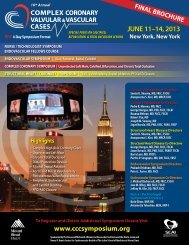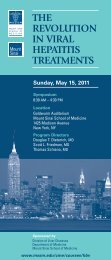March 18, 2012 [PDF] - Mount Sinai Hospital
March 18, 2012 [PDF] - Mount Sinai Hospital
March 18, 2012 [PDF] - Mount Sinai Hospital
- No tags were found...
You also want an ePaper? Increase the reach of your titles
YUMPU automatically turns print PDFs into web optimized ePapers that Google loves.
<strong>March</strong> 5 - <strong>March</strong> <strong>18</strong>, <strong>2012</strong>inside<strong>Mount</strong> <strong>Sinai</strong>Advancing Research IntoCancer VaccinesJulie Magarian Blander, PhD, and her researchers are investigatinga cancer vaccine.Researchers at The <strong>Mount</strong> <strong>Sinai</strong> Medical Center have shownthey can trigger a robust immune response to cancer cellsin mice that are engineered to resemble harmful bacteria.The promising research, published in the February 8 issueof Science Translational Medicine, could lay the groundworkfor a viable cancer vaccine strategy in humans.In the study, led by Julie Magarian Blander, PhD, AssociateProfessor of Medicine (Clinical Immunology), and aHirschl Scholar, tumor cells were engineered to expressbacterial flagellin from Salmonella typhimurium fused ornot to a model antigen such as ovalbumin (OVA) in awhole-cell vaccine.By masquerading as microbial cells, the cancer cells setoff an immune response that targeted them for clearance.Vaccinating mice with an irradiated flagellin-expressingmelanoma whole-cell vaccine protected them fromdeveloping metastases after they were injected withmelanoma cells, says Dr. Blander. Similarly, a separategroup of immunized mice rejected tumor cells that weretransplanted subcutaneously. Expression of a modelantigen with flagellin was not necessary.CONTINUED ON PAGE 2LookinsideClinical LeadersCommitted to ProvidingQuality CareInternal MedicineAssociates CelebratesThirtieth YearWorld Kidney DayCelebrationEpic Team Wins Award<strong>Mount</strong> <strong>Sinai</strong> Opens theFirst Geriatric EmergencyDepartment in New York CityThe <strong>Mount</strong> <strong>Sinai</strong> <strong>Hospital</strong> is home to the first full-scaleGeriatric Emergency Department (ED) in New York City. Thenew 1,200-square-foot ED, which is dedicated to servingambulatory patients 65 and older, opened on Friday, February17. Located within <strong>Mount</strong> <strong>Sinai</strong>’s main Emergency Department,the facility has 14 treatment spaces, including six privaterooms, and is equipped with skid-proof floors, hand-rails,comfortable mattresses, noise-minimizing curtains, softlighting, and skylights. Two rooms contain iPads that enablepatients to listen to classical music, or have face-to-face videoconversations with nurses who are at the nursing station.On a recent weekday afternoon when all of the department’sbeds were full, the wife of an elderly patient sat quietly at herCONTINUED ON PAGE 2Kevin M. Baumlin, MD, Director of ClinicalOperations, Department of EmergencyMedicine, shows a new iPad to Diane Meier,MD, Professor of Geriatrics and PalliativeMedicine, Director of the Center to AdvancePalliative Care and Vice Chair for Public Policy.
Advancing Research Into Cancer Vaccines (continued from page 1)The researchers demonstrated that protection from tumor growthresulted from the ability of flagellin to simultaneously engage twoinnate immune receptors,Toll-like receptor 5(TLR5), and the Nod-likereceptors NLRC4/NAIP5(neuronal apoptosisinhibitor protein).NLR engagement wascritical for mountinglasting anticancer T cellimmune responses. Aslong as neither TLR5nor NLRC4/NAIP5 wasSalmonella typhimuriumcompromised, the micewere able to fight off tumor development. But notably, the micewere not protected after vaccination with irradiated tumor cellsin combination with a co-administered recombinant flagellin. Thestudy’s authors say the physical presence of flagellin within thetumor cells was critical for protection.“Manipulating cancer cells to express flagellin allows a direct hit bythe immune system,” says Dr. Blander. “This precludes the need toidentify tumor-specific antigens to be used in vaccination.”According to Dr. Blander, “The next step in the research is makingsure we won’t cause an autoimmune response. We want to see ifthe vaccine preferentially triggers a response to proteins specificto cancer cells and not also to those shared with healthy cells. Wehave not seen evidence of autoimmunity, but we will need to do adetailed study.”First Geriatric Emergency Department in New York City (continued from page 1)husband’s bedside. “This really is an oasis,”she said, observing the department’s calmatmosphere. On an average day, the GeriatricED receives between 25 and 30 patients.Kevin M. Baumlin, MD, Associate Professorand Vice Chair, Director of ClinicalOperations, Department of EmergencyMedicine, spearheaded the developmentof <strong>Mount</strong> <strong>Sinai</strong>’s Geriatric ED, which wasmodeled after one that opened in 2009at St. Joseph’s Healthcare System inPaterson, New Jersey.Providing patients with a stress-freeexperience is one of the Geriatric ED’sgoals, says Dr. Baumlin. A longer-termgoal is improving the transition of care forpatients so they have fewer readmissions tothe emergency room when they’re back athome. Elderly patients often require moreresources from emergency room nurses andphysicians due to their complicated arrayof health care needs. <strong>Mount</strong> <strong>Sinai</strong>’s newdepartment is set up to handle that.Patients are assessed by a team of speciallytrained geriatric physicians, nurses, andsocial workers. Volunteers are often onhand to assist, as well. Specialists evaluatethe drugs patients are taking to determinethe potential for any harmful interactions,Administrators and staff gathered for the ribbon cutting. FRONT ROW, FROM LEFT: Gallane Abraham,MD, Clinical Instructor, Department of Emergency Medicine, and Assistant Director, GeriatricEmergency Department; Cynthia Levy, Director, Department of Volunteer Services; Andy S. Jagoda,MD, Professor and Chair of Emergency Medicine, and Director of the Emergency Medicine Department;Kevin M. Baumlin, MD; Carol Porter, DNP, Chief Nursing Officer/Senior Vice President, The <strong>Mount</strong><strong>Sinai</strong> Medical Center; Martine Sanon, MD, Assistant Professor, Brookdale Department of Geriatricsand Palliative Medicine; Denise Nassisi, MD, Director, Emergency Department Administration, ClinicalTrials and Geriatric Emergency Department, Department of Emergency Medicine; and Audrey Chun,MD, Associate Professor, Director, Martha Stewart Center for Living at <strong>Mount</strong> <strong>Sinai</strong>, Vice Chair, ClinicalPrograms, Brookdale Department of Geriatrics and Palliative Medicine; BACK ROW, FROM LEFT:Maureen Van Benthuysen, Senior Vice President, <strong>Hospital</strong> Administration; Suzanne Young-Mercer, MBA,Administrative Manager, Emergency Medicine; and Dwayne Raymond, Clinical Nurse Managerand whether patients would benefit fromwellness programs offered on an outpatientbasis by The Martha Stewart Center forLiving at <strong>Mount</strong> <strong>Sinai</strong>. The specialists alsodetermine whether patients will requirean at-home assessment to prevent falls orinjuries once they return home.“We have created a safer, better place wherewe can provide a team approach to caringfor the health and social problems that olderadults have,” says Dr. Baumlin. He points tovarious studies that have found the elderlyhave fewer emergency room readmissionsafter they are cared for in a facility like<strong>Mount</strong> <strong>Sinai</strong>’s.FROM LEFT: Andy S. Jagoda, MD; Kevin M. Baumlin, MD; Rosanne M. Leipzig, MD, Professor ofGeriatrics and Palliative Medicine, Clinical Geriatrics, and Health Evidence and Policy; and Ira S.Nash, MD, Chief Medical Officer and Senior Vice President for Medical Affairs<strong>Mount</strong> <strong>Sinai</strong>’s Brookdale Department ofGeriatrics and Palliative Medicine has longbeen a pioneer in clinical care, researchand education. For the last two years, theprogram has been ranked No. 1 in the nationby U.S. News & World Report.
Clinical Leaders Are Committed to Providing Quality CareAt a recent quality assessment workshopfor The <strong>Mount</strong> <strong>Sinai</strong> Medical Center’s clinicalleaders, Kenneth L. Davis, MD, President andChief Executive Officer, told departmentchairs and chiefs that maintaining a highlevel of patient care “is not just the rightthing to do—it is imperative for our future.”The Quality and Patient Safety Workshop forClinical Leadership was held on January 24understanding what needs to be done,about asserting leadership in yourown clinical domains, about acceptingaccountability for the care that your clinicalservices provide, and about providingbetter care.”Ira S. Nash, MD, Chief Medical Officer andSenior Vice President for Medical Affairs,organized the half-day workshop withWe have entered a new age of accountability and transparencyfor the quality of care we provide.— Kenneth L. Davis, MDimprovement capabilities within clinicaldepartments; managing adverse events fortransformation; and learning from theseevents. The goal of the workshop was toengage and educate clinical leaders on keyquality assessment and improvement issues,and have them identify targets and timelinesfor achieving them.“We stimulated a lot of thinking and,hopefully, action,” says Dr. Nash. “Ourintention was to provide the tools for peopleto implement improvements in quality.” Eachdepartment head was asked to consider badoutcomes that could occur, and provide aplan of action that would keep the situationsfrom arising in the first place.at the New York Academy of Medicine,and was run in conjunction with thenonprofit Institute for HealthcareImprovement (IHI). Dr. Davis told the 80 orso physicians and staff in attendance: “Wehave entered a new age of accountabilityand transparency for the quality ofcare we provide. Today has to be aboutthe IHI, which sent three experts to leadthe sessions: Katharine Luther, RN, VicePresident, <strong>Hospital</strong> Portfolio Planning andAdministration; Vinod K. Sahney, PhD, aSenior Fellow; and Stephen Swensen, MD,Director of Quality at the Mayo Clinic.The sessions included planning for patientsafety and clinical quality; buildingAt the workshop, Dr. Davis told theattendees, “Today can’t be about listeningto the experts and going back to businessas usual. Business as usual will not allow<strong>Mount</strong> <strong>Sinai</strong> to succeed in the competitivenational and local landscape. I look forwardto hearing back from each of you about howyou will make <strong>Mount</strong> <strong>Sinai</strong> a better, saferplace for our patients.”Internal Medicine Associates Celebrates Thirtieth YearInternal Medicine Associates (IMA) marked its thirtieth anniversaryon Wednesday, February 8, with a celebration that broughttogether faculty, staff, and patients. The outpatient clinic wasestablished in 1982 to serve the East Harlem Community. Sincethen, it has offered patients comprehensive and consistent care—regardless of their ability to pay. “This is a very important part ofthe DNA of <strong>Mount</strong> <strong>Sinai</strong>,” said Kenneth L. Davis, MD, President andChief Executive Officer of The <strong>Mount</strong> <strong>Sinai</strong> Medical Center. “We area socially conscious institution that believes in this community andthe right to health care for everybody.”Approximately 150 guests attended the event—among them,94-year-old Mary Hill, one of the original patients at IMA. “It’s nota pleasure being sick, everybody knows that, but it is good whenyou can come to a place, and people greet you with a smile, andtreat you like they have concern for you. And, that’s how I’ve beentreated since I’ve been a patient here,” she said.FROM LEFT: John S. Winkleman, Trustee and Chair, CommunityAffairs Committee of the Boards of Trustees, The <strong>Mount</strong> <strong>Sinai</strong>Medical Center; Kathleen Albohm, RN, NP, an original and currentIMA staff member; Dennis S. Charney, MD, Anne and Joel EhrenkranzDean, <strong>Mount</strong> <strong>Sinai</strong> School of Medicine and Executive Vice Presidentfor Academic Affairs, The <strong>Mount</strong> <strong>Sinai</strong> Medical Center; KennethL. Davis, MD; Alex Federman, MD, MPH, Chief, Division of GeneralInternal Medicine, Department of Medicine; Mary Hill; David Thomas,MD, Vice Chair, Department of Medicine, and Director of AmbulatoryCare and Training; Richard Bernstein, MD, Chief Medical Officer,Visiting Nurse Service, Associate Clinical Professor of Medicine(General Internal Medicine), Preventive Medicine, and Geriatrics andPalliative Care, and one of the original IMA physicians; Maureen VanBenthuysen, Senior Vice President, <strong>Hospital</strong> Administration, The<strong>Mount</strong> <strong>Sinai</strong> <strong>Hospital</strong>; and Diana Gonzalez, Medical Assistant, anoriginal and current IMA staff member
EventsEducationWorld Kidney Day CelebrationThe Division of Nephrology is sponsoring a WorldKidney Day Celebration to raise awareness aboutChronic Kidney Disease (CKD), and kidney donationand transplantation. Stop by for free CKD screenings,raffles, giveaways, information, and more.Thursday, <strong>March</strong> 810 am – 3 pmGuggenheim Pavilion AtriumSeminar SeriesPharmacology andSystems TherapeuticsIndika Rajapakse, PhD,Postdoctoral Fellow, FredHutchinson Cancer ResearchCenter, presents “SpatialDynamics of GenomeOrganization in Developmentand Disease.”Thursday, <strong>March</strong> 82 – 3 pmAnnenberg 19-79Grand RoundsOncological SciencesChristopher Vakoc, MD, PhD,Assistant Professor, Cold SpringHarbor Laboratory, presents“BET Bromodomain-Inhibitionas Targeted Therapy in AcuteMyeloid Leukemia.”Tuesday, <strong>March</strong> 13NoonIcahn Medical InstituteFirst Floor Seminar RoomEpic Team Wins AwardGrand RoundsHealth Evidence & PolicyPaolo Boffetta, MD, MPH,Charles G. Bluhdorn Professor ofInternational Community Medicine,Director, Institute for TranslationalEpidemiology, presents “WhyMost Medical Results Are False.”Tuesday, <strong>March</strong> 61 pmIcahn Medical InstituteSecond FloorClassroom L2-82Grand RoundsEndocrinologyGiuseppe Barbesino, MD,Assistant Professor of Medicine,Harvard Medical School, presents“Drugs and Thyroid Function.”Thursday, <strong>March</strong> 154:30 – 5:30 pmAtran BuildingFourth FloorRoom AB4-11The Alexander RichmanCommemorative Award and LectureThe Alexander Richman Award forHumanism and Ethics in Medicine willbe presented to Nathan Kase, MD,Dean Emeritus, <strong>Mount</strong> <strong>Sinai</strong> School ofMedicine. Featured speakers PatriciaHeberer, PhD, Historian, United StatesHolocaust Memorial Museum, andMatthew Wynia, MD, MPH, Director,Institute for Ethics, American MedicalAssociation, present “Deadly Medicinein the Nazi Era: What Turned PhysicianHealers into Killers.”Thursday, <strong>March</strong> 2211 am – NoonHatch AuditoriumAnesthesiology VisitingProfessor ProgramLee Fleisher, MD, Robert Dunning DrippsProfessor of Anesthesiology and CriticalCare, Perelman School of Medicine, theUniversity of Pennsylvania, is the medalrecipient and lecturer for the 49th AnnualEliasberg Memorial Reception andLecture, “Value from Anesthesia Care:Where Do We Influence the Outcome/Cost Equation in Medicine?”Wednesday, <strong>March</strong> 146:45 – 8 amAnnenberg 13-01The team that oversees the implementation ofEpic, <strong>Mount</strong> <strong>Sinai</strong>’s state-of-the-art inpatientelectronic medical record (EMR) system, receivedthe 2011 New York City Project of the Year Awardfrom the Project Management Institute, theleading not-for-profit membership organization ofproject management professionals. The team wasrecognized for superior performance and executionof an exemplary project.The project was led by Kristin Myers, Vice Presidentof Information Technology (IT), Epic ClinicalTransformation Group, and managed by SusanBrassell-Knox, Director of <strong>Mount</strong> <strong>Sinai</strong>’s ProjectManagement Office, and included project managersDaniel Katselnik, Katya Osipova, Elena Sethi,and Kathleen Sullivan, and project coordinatorsKevin Delaney, Josephine Fang, Anne Heartness,George Horvath, and Sally Ritter. Epic’s successfulimplementation also was spearheaded by theapplications, interface, and technical teams withinthe Epic Clinical Transformation Group, and aclose partnership among the IT Department andproviders, nursing, and other clinicians.“This award recognizes the outstanding workof <strong>Mount</strong> <strong>Sinai</strong>’s Epic Clinical TransformationGroup,” says Wayne Keathley, President and ChiefOperating Officer of The <strong>Mount</strong> <strong>Sinai</strong> <strong>Hospital</strong>.“Epic is enhancing the quality of patient care bymaking it easier for the patient’s health care teamto access and manage health information, whereand when needed. I would like to thank the Epicteam for leading our successful transition to anelectronic medical record.”The <strong>Mount</strong> <strong>Sinai</strong> <strong>Hospital</strong> also was recognized in2011 for attaining a high-level “Stage 6” statuson the Healthcare Information and Managementand Systems Society EMR Adoption Model, whichis a methodology that evaluates the progressand impact of EMR systems. <strong>Mount</strong> <strong>Sinai</strong>, one ofonly 237 hospitals in the country to receive thedesignation, is pursuing the highest-level “Stage 7”status in <strong>2012</strong> as it continues the Epic rollout.Inside <strong>Mount</strong> <strong>Sinai</strong><strong>2012</strong> Marketing & CommunicationsCarrie Gottlieb, EditorMarilyn Balamaci, EditorSubmissionsBox 1475inside@mssm.eduVisit Inside on the Webwww.mountsinai.org/insideFRONT ROW, FROM LEFT: Membersof the Epic team include: DanielKatselnik, Kristin Myers, JosephineFang, Elena Sethi, Sally Ritter, andSusan Brassell-Knox; BACK ROW,FROM LEFT: Katya Osipova, AnneHeartness, and Kevin Delaney.To find out what’s happeningright now, follow <strong>Mount</strong> <strong>Sinai</strong>on Twitter @<strong>Mount</strong><strong>Sinai</strong>NYCVisit us on Facebookfacebook.com/mountsinainyc


![March 18, 2012 [PDF] - Mount Sinai Hospital](https://img.yumpu.com/50462098/1/500x640/march-18-2012-pdf-mount-sinai-hospital.jpg)
![December 2, 2012 [PDF] - Mount Sinai Hospital](https://img.yumpu.com/51092274/1/190x245/december-2-2012-pdf-mount-sinai-hospital.jpg?quality=85)
![January 21, 2013 [PDF] - Mount Sinai Hospital](https://img.yumpu.com/50916550/1/190x245/january-21-2013-pdf-mount-sinai-hospital.jpg?quality=85)
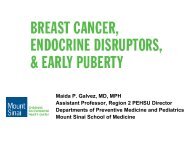
![February 3, 2013 [PDF] - Mount Sinai Hospital](https://img.yumpu.com/50584982/1/190x245/february-3-2013-pdf-mount-sinai-hospital.jpg?quality=85)
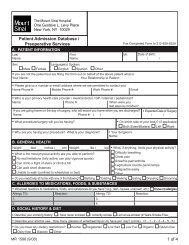
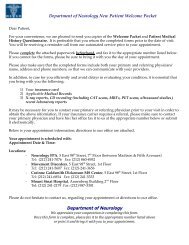
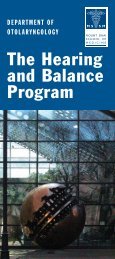
![Partners Program Guide [PDF] - Mount Sinai Hospital](https://img.yumpu.com/49411954/1/190x245/partners-program-guide-pdf-mount-sinai-hospital.jpg?quality=85)
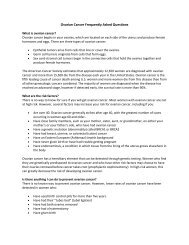
![March 19 - April 1, 2012 [PDF] - Mount Sinai Hospital](https://img.yumpu.com/48990923/1/190x245/march-19-april-1-2012-pdf-mount-sinai-hospital.jpg?quality=85)
![PGY-1 Residency Application [PDF] - Mount Sinai Hospital](https://img.yumpu.com/48577701/1/190x245/pgy-1-residency-application-pdf-mount-sinai-hospital.jpg?quality=85)
